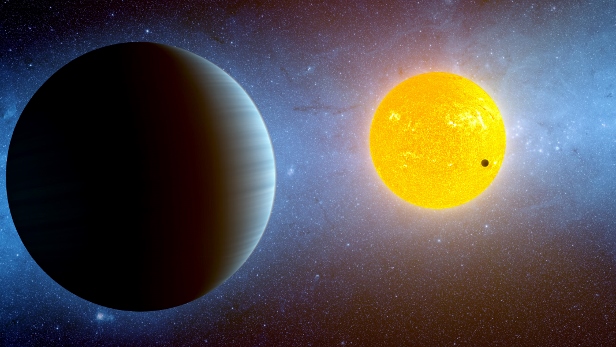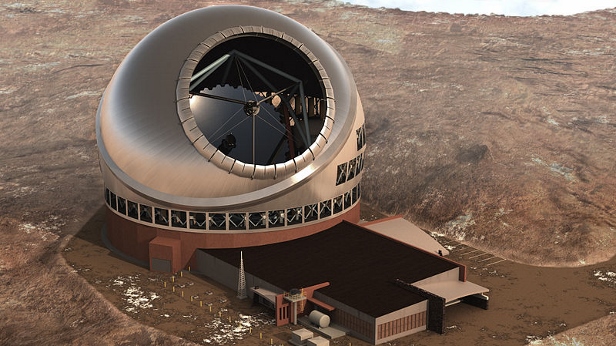Researchers say the next exploration mission should be to an exoplanet
This new report states that NASA’s next mission to be to directly study Earth-like exoplanets, as we know so little about other planetary systems

Kepler has been vital in the discovery of exoplanets, such as Kepler-10 shown, but characterising exoplanets is a much harder task. Image: NASA/Ames/JPL-Caltech
To answer significant questions about planetary systems, such as whether our Solar System is a rare phenomenon or if life exists on planets other than Earth, NASA should lead a large direct imaging mission – an advanced space telescope – capable of studying Earth-like exoplanets orbiting stars similar to the Sun, says a new congressionally mandated report by the National Academies of Sciences, Engineering, and Medicine, based in Washington, United States.
The study of exoplanets – planets outside our Solar System that orbit a star – has seen remarkable discoveries in the past decade. The report identifies two overarching goals in this field of science:
- To understand the formation and evolution of planetary systems as products of star formation and characterise the diversity of their architectures, composition, and environments.
- To learn enough about exoplanets to identify potentially habitable environments and search for scientific evidence of life on worlds orbiting other stars.
Based on these goals, the committee that authored the report found that our current knowledge of the range of characteristics of planets outside the Solar System is substantially incomplete. A holistic approach to studying habitability in exoplanets, using both theory and observations, will ultimately be required to search for evidence of past and present life elsewhere in the universe.
While the committee recognised that developing a direct imaging capability will require large financial investments and a long time scale to see results, the effort will foster the development of the scientific community and technological capacity to understand myriad worlds. To detect a system analogous to our own Earth-Sun system, the report recommends using instruments that enable direct imaging of an exoplanet by blocking the light emitted by the parent stars – such as a coronagraph or starshade.
In addition, ground-based astronomy – enabled by two United States-led telescopes – will also play a pivotal role in studying planet formation and potentially terrestrial worlds, the report says. The future Giant Magellan Telescope (GMT) and proposed Thirty Meter Telescope (TMT) would allow profound advances in imaging and spectroscopy – absorption and emission of light – of entire planetary systems. They also could detect molecular oxygen in temperate terrestrial planets in transit around close and small stars, the report says.

The Thirty Meter Telescope (TMT) will hopefully be built by mid-2020s and will be situated on Mauna Kea in Hawai’i. Image credit: TMT Observatory Corporation
The committee pointed out that the technology road map to enable the full potential of GMT and TMT in the study of exoplanets is in need of investments, and should leverage the existing network of United States centres and laboratories. To that end, the report recommends that the National Science Foundation invest in both telescopes and their exoplanet instrumentation to provide all-sky access to the United States community.
While missions like Kepler spacecraft have characterised a remarkable population of planets relatively close to their stars, our knowledge of worlds in the outer reaches of the universe is woefully lacking, the committee says. The report says WFIRST, the large space-based mission that received the highest priority in the Academies’ 2010 decadal survey, will play two extremely valuable roles: first, it will permit a survey of planets farther from their stars than surveyed by Kepler and other missions. Second, it will enable a large direct imaging mission.
Although the radial velocity method – which measures the shift of the star as it orbits the centre of mass of the planet system – will continue to provide essential mass and orbit information, its measurements are currently limited by variations in the surface of the star and imperfect calibration of the instruments, the report says. New instruments installed on large telescopes, substantial allocations of observing time, and collaboration between observers as well as theorists are some of the requirements for progress. To develop these methods and facilities for measuring the masses of temperate terrestrial planets orbiting Sun-like stars, NASA and NSF should establish a strategic initiative in Extremely Precise Radial Velocities.
In addition, NASA should create a mechanism to systematically collect data on exoplanet atmospheres early in the James Webb Space Telescope mission. The committee also recommended building on the model of NASA’s interdisciplinary collaboration initiative — Nexus for Exoplanet Science System – by supporting a cross-divisional research effort inviting proposals for interdisciplinary research.
The committee called on NASA to support a robust individual investigator program that includes grants for theoretical, laboratory, and ground-based telescopic investigations to fully realise the scientific payoff of exoplanet missions. The report also recognises that discrimination and harassment exist in the scientific workforce and can affect the exoplanet research community, posing barriers to the participation of people from certain demographic groups. To maximise scientific potential and opportunities for excellence, institutions and organisations should take concrete steps to eliminate discrimination and harassment and to proactively recruit and retain scientists from underrepresented groups.
The study was sponsored by NASA. The National Academies of Sciences, Engineering, and Medicine are private, non-profit institutions that provide independent, objective analysis and advice to the nation to solve complex problems and inform public policy decisions related to science, technology, and medicine. They operate under an 1863 congressional charter to the National Academy of Sciences, signed by President Lincoln.
Keep up to date with the latest news in All About Space – available every month for just £4.99. Alternatively you can subscribe here for a fraction of the price!




